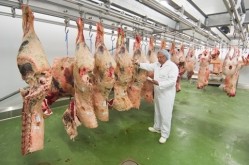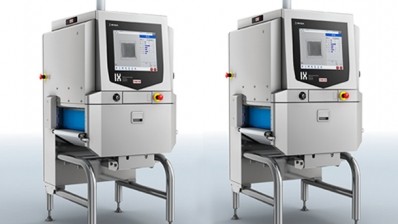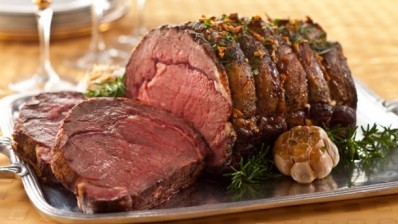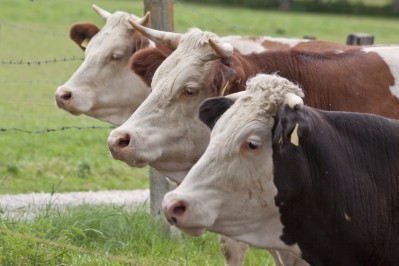Beef farmers could be penalised for heavier carcases

More than 40% of steers slaughtered in Britain in February 2016 had carcase weights above 380kg, up from 36% a year before, according to a new report from the levy-paying organisation that represents producers Agriculture and Horticulture Development Board (AHDB) Beef & Lamb.
The latest figures, published yesterday (May 31) form the first part of a continuing, in-depth analysis of cattle prices and specifications. They provided an analysis of the distribution of cattle in the AHDB deadweight price reporting sample by conformation, fat class and weight band.
Heavier carcases
The findings showed the proportion of heifer and young bull carcases above the 380kg weight was also higher this year. They also showed that heavier carcases were particularly concentrated among those with the highest lean meat yield – conformation grades E and U. In these classes, most carcases weighed over 380kg, with many over 420kg.
“These carcases currently attract some of the highest average prices, on a pence per kilogram basis, as many processors pay bonuses for them,” said Stephen Howarth, market specialist manager for AHDB Market Intelligence. “However, there is a risk that new penalties for being overweight will actually reduce their value.
“This could potentially have significant implications for those producers who are currently aiming to deliver animals with the highest conformation. They might need to adjust their system towards producing lower conformation, lighter animals.”
Conformation and fat class
The report also looked at how the distribution of carcases by conformation and fat class changed over the year to February 2016.
This showed relatively little change in fat classes, but a shift towards R grade carcases, compared with a year earlier, mainly from O. This represented a small improvement in the conformation of carcases over that period, suggesting producers were getting better at delivering cattle that met processors’ target specification.
The deadweight price reporting system collects the conformation, fat class and carcase weight for each animal. These measures are important because together they generally determine how much producers get paid for each carcase.
Conformation is based on an eight-point scale. This is based on the lean meat yield from the carcase. Grades are (in descending order of lean meat yield) E, U+, -U, R, O+, -O, P+ and -P. Some processors use a more detailed classification (eg splitting U, O and P classifications into three rather than two categories). Where this is the case, animals have been allocated to an appropriate conformation category.
Fat class is reported on a seven-point scale. In increasing order of fat cover, the classes are 1, 2, 3, 4L, 4H, 5L and 5H. Again, where processors use a more detailed classification, animals are allocated to an appropriate class in the price reporting system.
















